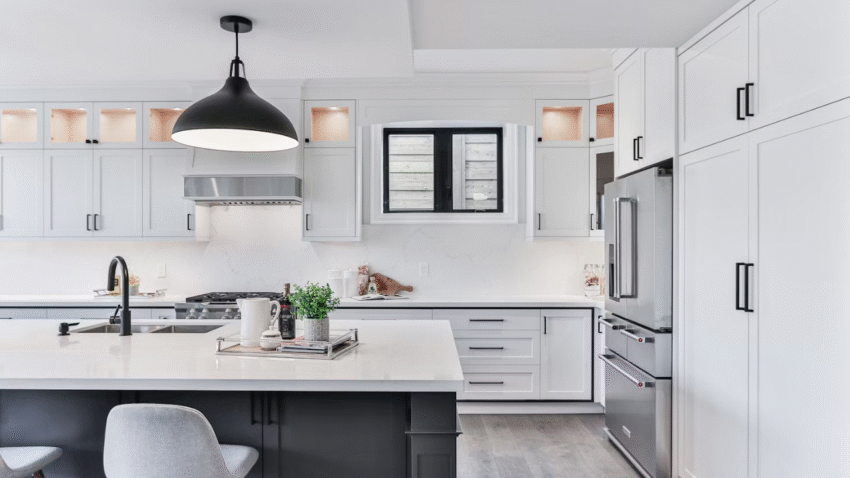Introduction
Worried about bacteria lingering on your cutting board? In this guide, you’ll learn how to sanitize your cutting board properly to keep your kitchen safe and hygienic. Whether you’re cutting raw meat, chopping veggies, or slicing fruit, your cutting board can harbor dangerous germs if not cleaned correctly. This step-by-step method will help you eliminate bacteria and maintain a cleaner kitchen environment.
Why Sanitizing Your Cutting Board Matters in the Kitchen
Cutting boards are one of the most-used kitchen tools, making them a hotspot for cross-contamination. When used for raw meats, seafood, or even unwashed produce, they can become a breeding ground for harmful bacteria like Salmonella, E. coli, and Listeria. If not sanitized properly, your cutting board can transfer these bacteria to other foods, utensils, or prep surfaces—risking foodborne illness.
Sanitizing your cutting board is about more than just appearance; it’s a critical step for food safety and kitchen efficiency. A clean board means less risk, better-tasting meals, and peace of mind when cooking for your family or guests.
Step-by-Step Guide to Sanitizing Your Cutting Board
1. Clean Your Cutting Board First
Before sanitizing, remove all food particles and surface grime.
- Rinse: Use warm water to rinse off leftover bits.
- Scrub: Apply dish soap and scrub thoroughly with a brush or sponge.
- Rinse Again: Rinse thoroughly to remove soap residue.
Reminder: Never sanitize a dirty board—cleaning comes first.
2. Choose Your Sanitizing Method
There are several effective sanitizing options, depending on the material of your cutting board (wood, plastic, or bamboo):
Option A: White Vinegar (For Natural Cleaning)
- Pour white vinegar directly onto the board or soak a cloth with vinegar and wipe it down.
- Let it sit for 5 minutes.
- Rinse with hot water and dry with a clean towel.
Best For: Wooden or bamboo cutting boards, where bleach is too harsh.
Option B: Diluted Bleach Solution (Highly Effective for Plastic)
- Mix 1 tablespoon of unscented liquid bleach with 1 gallon of water.
- Apply using a clean cloth or by submerging the board.
- Let it stand for 1–2 minutes.
- Rinse thoroughly with hot water and air dry.
Kitchen Tip: This method is FDA-recommended for sanitizing food-contact surfaces.
Option C: Hydrogen Peroxide (Mild Disinfection)
- Pour 3% hydrogen peroxide over the surface.
- Let sit for 10 minutes.
- Scrub gently, rinse with hot water, and dry completely.
Tip: This is a great alternative to bleach with less odor.
3. Dry the Cutting Board Completely
Air drying is best. Prop the cutting board upright or place it in a dish rack.
Warning: Avoid storing a damp board in a drawer or cupboard, as it encourages mold and bacteria growth.
4. Optional: Disinfect With Lemon and Salt (Natural Deodorizing)
- Sprinkle coarse salt over the board.
- Cut a lemon in half and scrub the board with it, squeezing slightly to release juice.
- Let it sit for 5 minutes before rinsing and drying.
Bonus Tip: This method not only disinfects but also removes strong odors like garlic or onion.
5. Condition Wooden Boards Monthly
If you use a wooden or bamboo cutting board, apply a food-grade mineral oil once a month to prevent cracking and preserve the wood.
- Rub the oil in with a soft cloth.
- Let it soak in overnight.
- Wipe off excess in the morning.
Kitchen Reminder: Well-oiled boards resist moisture and bacteria better.
Common Mistakes to Avoid
Mistake 1: Using the Same Board for Everything
Solution: Use separate cutting boards for raw meat, vegetables, and ready-to-eat items. Color-coded boards help prevent cross-contamination.
Mistake 2: Putting Wooden Boards in the Dishwasher
Solution: Hand wash wooden and bamboo boards only. Dishwashers warp the wood and cause cracking.
Mistake 3: Not Sanitizing After Raw Meat
Solution: Always sanitize your board immediately after cutting poultry, fish, or beef to kill bacteria before it spreads.
Mistake 4: Storing the Board While Wet
Solution: Always dry your cutting board fully before storing to avoid mildew and bacterial growth.
Mistake 5: Using Bleach on Wood
Solution: Avoid bleach on wooden boards—it breaks down the fibers. Use vinegar or hydrogen peroxide instead.
Extra Tips & Kitchen Hacks
1. Invest in Dishwasher-Safe Plastic Boards
Plastic cutting boards can handle heavy-duty sanitation. Choose BPA-free plastic that’s labeled dishwasher safe for a deeper clean.
2. Replace Damaged Cutting Boards
If your board has deep grooves or cracks, it may harbor bacteria that can’t be cleaned out. Replace it to stay safe.
3. Use Baking Soda for Stains
Stubborn stains on your cutting board? Make a paste with baking soda and water, scrub gently, then rinse. It brightens without damaging the surface.
Pro Tip: Baking soda also neutralizes lingering odors.
Conclusion
Sanitizing your cutting board properly isn’t just a good habit—it’s a necessary kitchen practice for protecting yourself and others from harmful bacteria. Whether you use vinegar, bleach, or hydrogen peroxide, taking a few extra minutes to sanitize will keep your prep surface safe and your meals delicious.
Clean it, sanitize it, and let it dry fully—that’s the formula for a cutting board that’s safe to use every day.
🔖 Bookmark this guide to keep your cutting boards clean and your kitchen safe year-round!
